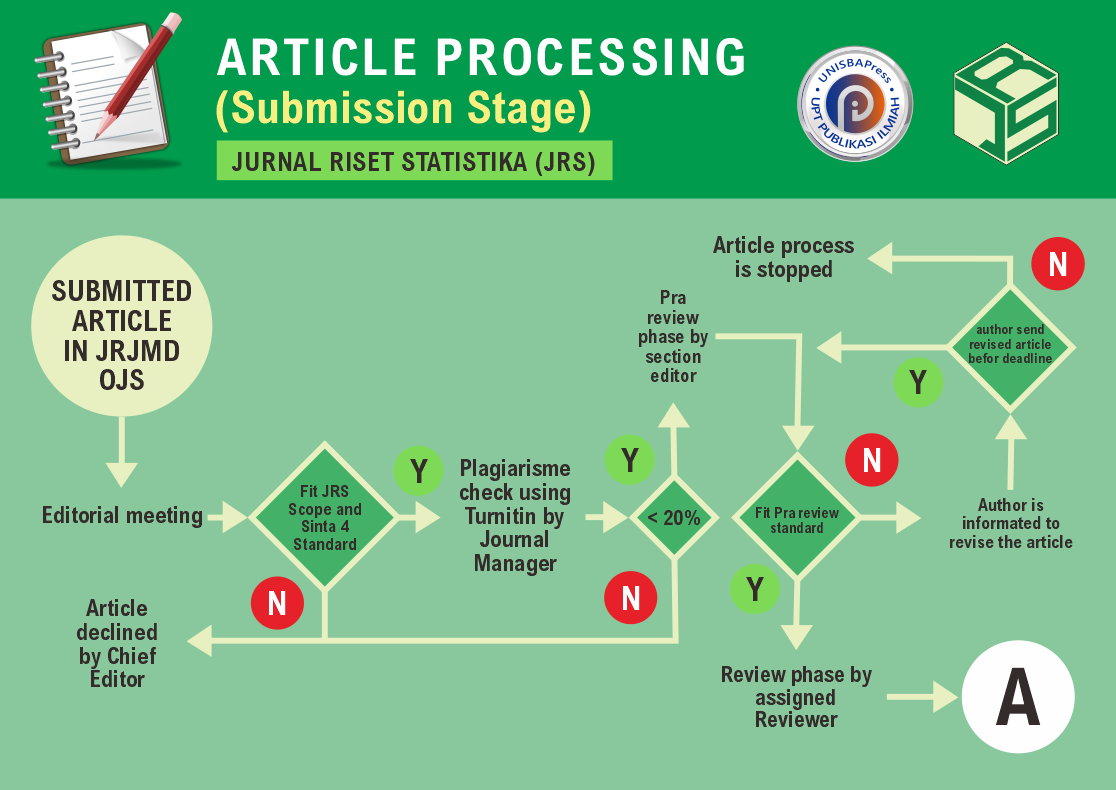Algoritma Artificial Neural Network dalam Klasifikasi Chest X-Rays Pasien COVID-19
DOI:
https://doi.org/10.29313/jrs.v2i2.1426Keywords:
Artificial Neural Network, Klasifikasi, COVID-19Abstract
Abstract. Artificial neural network is a network formed based on a human neural network consisting of a summation function, activation function and goal function. Artificial neural networks can be used to recognize objects from an image. The output of the artificial neural network in this study is the result of classification. This study will classify chest x-rays of COVID-19 patients. The process of classification using sigmoid activation function for the case of binary classification. Currently, to diagnose COVID-19 using Reverse Transcription Polymerase Chain Reaction (RT-PCR). However, there are several problems with the test mechanism (RT-PCR), has to do it special tools, materials, and it takes quite a long time. Another solution that can help is, use digital images form of chest x-rays to retrieve information and recognize objects automatically using artificial neural network method. The results of chest x-rays classification using a artificial neural network method with sigmoid activation function, get an accuracy of 88%, precision of 76%, and recall of 76%.
Abstrak. Artificial neural network adalah jaringan yang dibentuk berdasarkan jaringan saraf manusia yang terdiri dari fungsi penjumlahan, fungsi aktivasi dan fungsi tujuan. Artificial neural network dapat digunakan untuk mengenali objek dari suatu citra. Output dari artificial neural network pada penelitian ini merupakan hasil klasifikasi. Penelitian ini akan melakukan klasifikasi chest x-rays pasien COVID-19. Proses klasifikasi dilakukan dengan menggunakan bantuan fungsi aktivasi sigmoid untuk kasus klasifikasi binary. Selama ini untuk mendiagnosa COVID-19 dilakukan dengan tes Reverse Transcription Polymerase Chain Reaction (RT-PCR). Namun ada beberapa masalah pada mekanisme pengujian tes (RT-PCR) diantaranya perlunya alat dan bahan khusus dan memakan waktu yang cukup lama. Solusi yang lebih cepat berbasis data sangat diperlukan dibandingkan melakukan tes (RT-PCR). Salah satu cara yang dapat membantu adalah dengan memanfaatkan citra digital berupa chest x-rays untuk mengambil informasi dan mengenali objek secara otomatis dengan menggunakan metode artificial neural network. Hasil klasifikasi chest x-rays dengan arsitektur artificial neural network yang telah dibangun mendapatkan nilai akurasi sebesar 88%, presisi sebesar 76% dan recall sebesar 76%.
References
E. Alpaydın, Introduction to Machine Learning, 4th ed. London: MIT Press, 2020.
W. Setiawan, Deep Learning Menggunakan Convolutional Neural Network. Malang: MNC, 2020.
E. S. Noviando, E. ’. Ervianto, and I. ’. Yasri, “Studi Penerapan ANN (Artificial Neural Network) untuk Menghilangkan Harmonisa pada Gedung Pusat Komputer,” J. Online Mhs. Fak. Tek. Univ. Riau, vol. 3, no. 2, pp. 1–6, 2016.
P. D. Inas Azizah, “Penerapan Probabilistic Neural Network pada Klasifikasi Berat Bayi Baru Lahir,” J. Ris. Stat., vol. 1, no. 2, pp. 152–159, Feb. 2022, doi: 10.29313/jrs.v1i2.524.
W. S. Eka Putra, “Klasifikasi Citra Menggunakan Convolutional Neural Network (CNN) pada Caltech 101,” J. Tek. ITS, vol. 5, no. 1, 2016, doi: 10.12962/j23373539.v5i1.15696.
S. Hassantabar, M. Ahmadi, and A. Sharifi, “Diagnosis and detection of infected tissue of COVID-19 patients based on lung x-ray image using convolutional neural network approaches.,” Chaos. Solitons. Fractals, vol. 140, p. 110170, Nov. 2020, doi: 10.1016/j.chaos.2020.110170.
N. Srinivasan, V. Ravichandran, K. L. Chan, J. R. Vidhya, S. Ramakirishnan, and S. M. Krishnan, Exponentiated backpropagation algorithm for multilayer feedforward neural networks. 2002. doi: 10.1109/ICONIP.2002.1202187.
I. Goodfellow, Y. Bengio, and A. Courville, Deep Learning. 2016.
M. Sokolova and G. Lapalme, “A systematic analysis of performance measures for classification tasks,” Inf. Process. Manag., vol. 45, no. 4, pp. 427–437, 2009, doi: https://doi.org/10.1016/j.ipm.2009.03.002.
F. Gorunescu, “Data mining: Concepts, models and techniques,” vol. 12, 2011, doi: 10.1007/978-3-642-19721-5.













